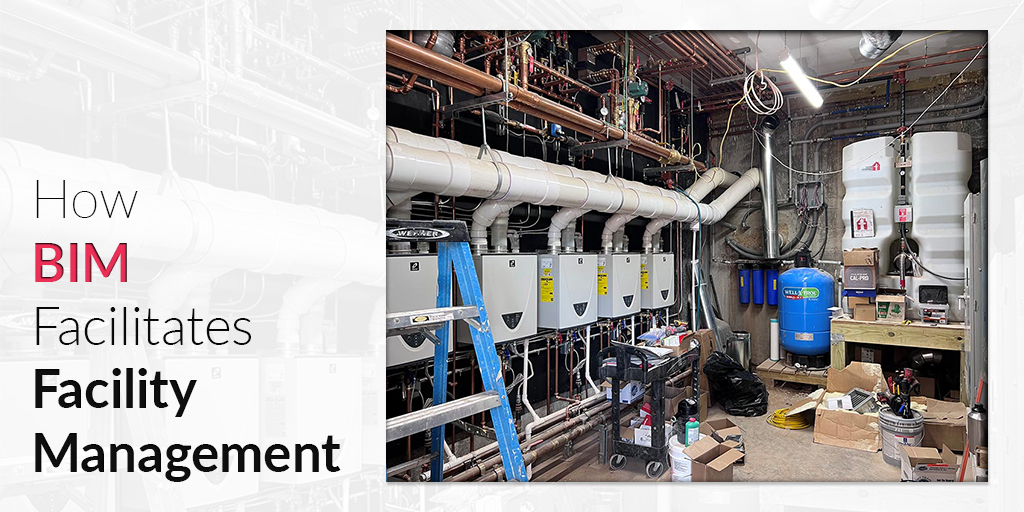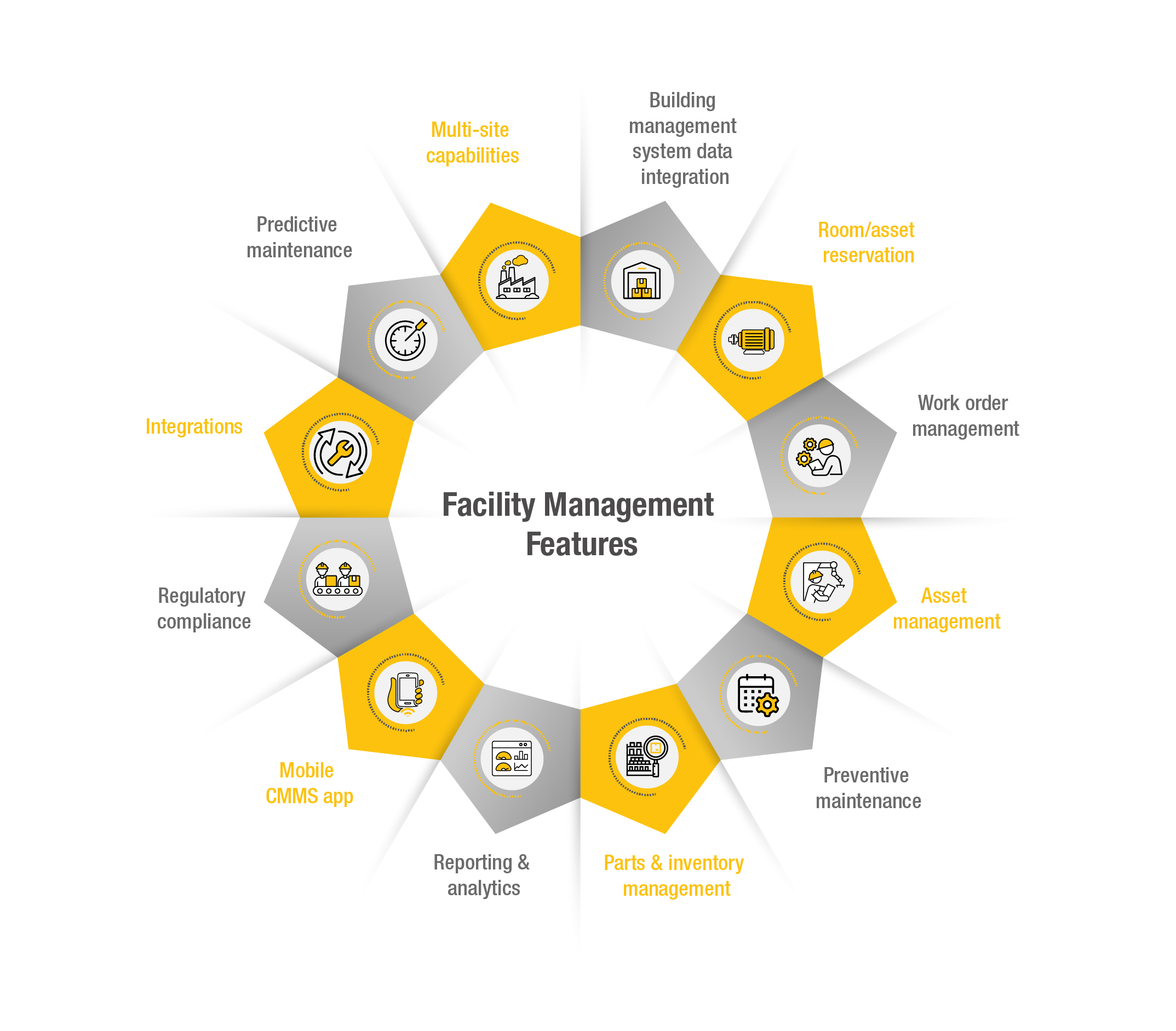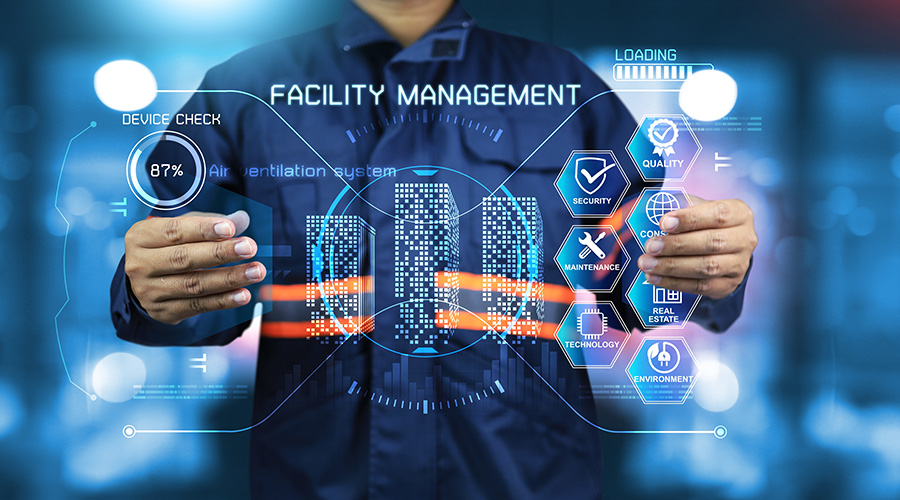Secret Patterns Shaping the Future of Facility Monitoring in 2024
As we look in advance to 2024, the landscape of facility administration is poised for considerable makeover, driven by several vital patterns. The assimilation of smart structure modern technologies and a shift towards data-driven decision-making pledge to improve operational effectiveness while prioritizing sustainability in method.
Smart Building Technologies

Smart structure technologies include a vast range of systems, including intelligent illumination, HVAC controls, and security systems. By incorporating these systems, center managers can keep an eye on and adjust criteria in real-time, resulting in considerable reductions in energy waste and operational costs. Smart sensing units can identify tenancy degrees and change lighting and temperature level as necessary, making sure that energy is just made use of when required.
Furthermore, these innovations help with improved information collection, allowing companies to track usage patterns and determine possibilities for further enhancements. The application of smart structure modern technologies not just adds to sustainability objectives but likewise develops much healthier job settings that can improve employee performance and complete satisfaction.
As we move right into 2024, the adoption of clever structure modern technologies will likely speed up, showing a wider change towards even more smart, receptive, and lasting center administration techniques.
Data-Driven Decision Making
Significantly, organizations are leveraging data-driven choice making to improve facility monitoring methods. By using data analytics, facility supervisors can acquire workable insights that substantially improve functional effectiveness and resource allotment. The combination of advanced technologies, such as IoT sensors and real-time surveillance systems, makes it possible for the collection of substantial amounts of data on building efficiency, occupancy rates, and energy usage.
This wide range of info permits facility managers to determine trends, anticipate upkeep demands, and proactively address concerns before they rise. Anticipating analytics can forecast tools failures, minimizing downtime and repair expenses. Additionally, information visualization devices assist in better communication among stakeholders, guaranteeing that notified choices are made collaboratively.
Furthermore, data-driven methods boost tactical planning by allowing facility managers to assess the performance of existing techniques and make educated selections pertaining to financial investments in innovation or facilities. As companies progressively prioritize operational quality, data-driven choice production is poised to end up being a foundation of successful center monitoring strategies in 2024 and beyond. Inevitably, the capability to leverage information properly will empower organizations to produce much more efficient, effective, and durable centers.
Sustainability and Eco-friendly Practices
The emphasis on data-driven choice making normally aligns with the expanding emphasis on sustainability and green practices within center management. As companies progressively focus on ecological obligation, center managers are leveraging analytics to optimize resource usage, reduce waste, and lessen carbon impacts. This critical strategy enables the integration of energy-efficient systems, such as LED illumination, smart a/c controls, and renewable resource resources right into facility operations.
Moreover, the execution of sustainable methods extends beyond power intake. Center managers are advertising and adopting environment-friendly products recycling efforts to produce a circular economic climate within their centers. This not only boosts the ecological account of the organization however additionally cultivates a society of sustainability among workers.
Compliance with environmental laws is another critical facet driving the adoption of environment-friendly practices. By making use of information analytics, center supervisors can check compliance metrics and recognize locations for improvement, ensuring adherence to global and neighborhood sustainability standards.
Hybrid Job Designs
A substantial change in the direction of crossbreed job designs is improving the landscape of facility management in 2024. This paradigm combines in-office and remote job, necessitating a reevaluation of space usage, resource allowance, and staff member involvement techniques. Organizations are significantly recognizing the significance of flexible work spaces that deal with diverse needs and choices.
Facility supervisors need to adjust by applying flexible workplace styles that support collaborative efforts while providing locations for concentrated job. This consists of the assimilation of technology to promote smooth interaction and partnership among remote and in-office employees. Smart building solutions, outfitted with sensing units and analytics, permit real-time tracking of space usage, making it possible for organizations to optimize their environments successfully.
Additionally, hybrid job versions stress the need for effective center management that prioritizes worker experience. This encompasses not only modern technology and space style yet additionally the advancement of policies that promote a well balanced work-life dynamic. As firms navigate this shift, the role of facility administration becomes critical in developing an agile office that fosters efficiency and drives business success. Basically, the crossbreed work design is revolutionizing center management, encouraging a positive strategy to meet the evolving demands of the workforce.
Improved Passenger Wellness
As companies embrace hybrid work designs, an enhanced emphasis on look what i found resident health is coming to be integral to center management techniques. Facility Management. This shift recognizes that a pleased and healthy and balanced workforce navigate to these guys straight influences performance and retention prices. Facility supervisors are now focusing on environments that advertise psychological and physical wellness, incorporating elements such as all-natural lighting, biophilic layout, and available wellness resources

Technology plays an essential duty in this advancement. Smart structure systems can keep an eye on environmental aspects and change setups in real-time, making sure ideal convenience degrees - Facility Management. Furthermore, feedback mechanisms, such as occupancy sensing units and employee surveys, permit center managers to continuously refine wellness efforts based upon resident requirements.

Conclusion
In 2024, the future of facility management will be considerably affected by the assimilation of wise building technologies and data-driven decision-making, cultivating enhanced operational effectiveness. Sustainability initiatives will prioritize environment-friendly practices, while the appearance of crossbreed work versions will certainly necessitate flexible office layouts. A heightened focus on occupant wellness via advanced Heating and cooling systems and biophilic style will add to much healthier job atmospheres. These fads jointly highlight the evolving landscape of facility management in reaction to contemporary obstacles and opportunities.
Center managers are taking on environmentally friendly materials and promoting recycling campaigns to develop a round economic situation within their facilities.A significant shift in the direction of crossbreed work models is reshaping the landscape of center management in 2024.Furthermore, hybrid job versions highlight the requirement for efficient center management that focuses you can find out more on employee experience.As organizations embrace hybrid job designs, an increased focus on occupant health is coming to be indispensable to facility administration techniques.In 2024, the future of facility monitoring will certainly be considerably affected by the assimilation of smart structure innovations and data-driven decision-making, promoting enhanced operational performance.